Advocates and lawmakers hope bills to benefit youth beat crossover deadline
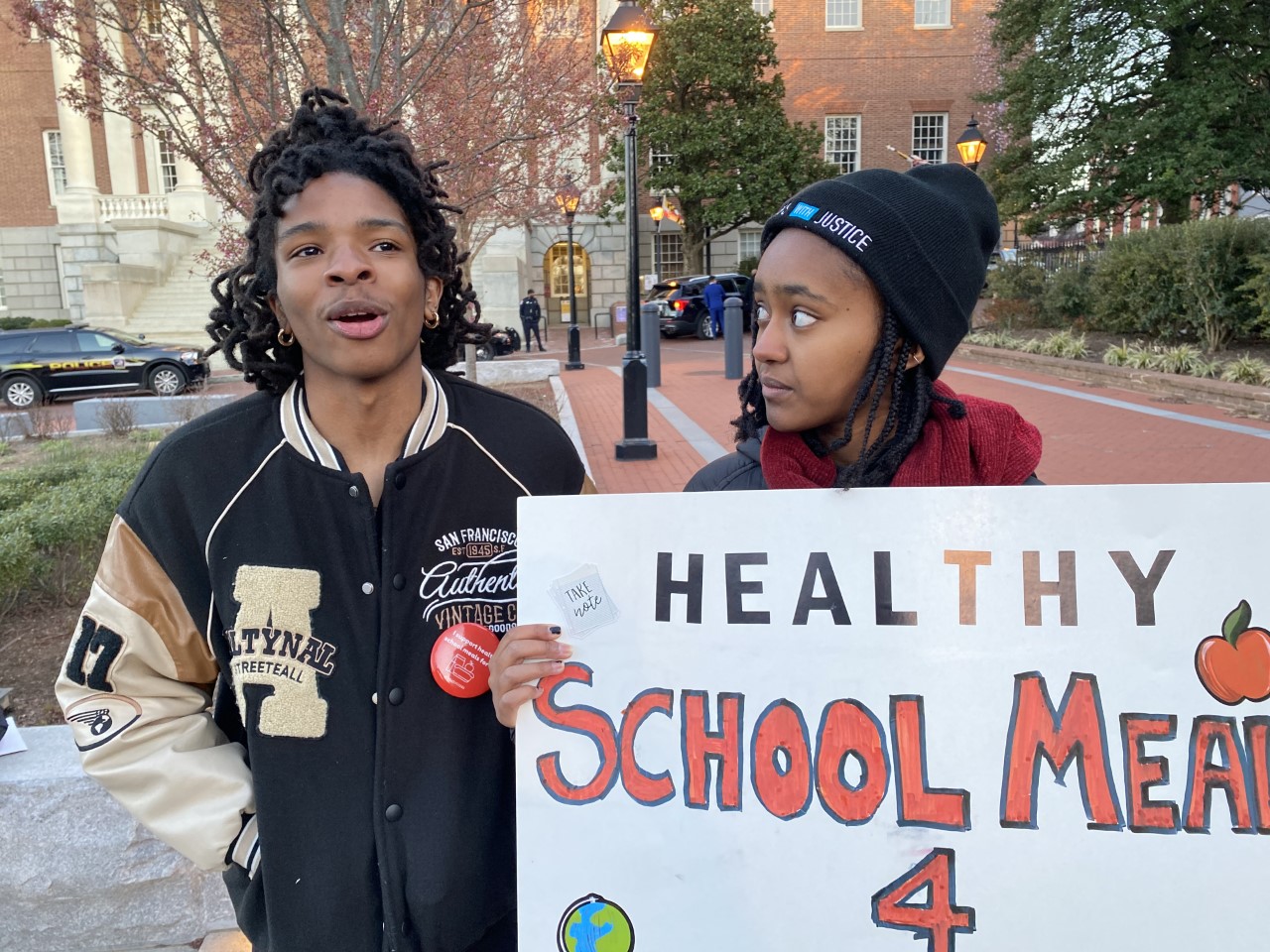
Obse Abede and Marcus Ross say one of the best ways to improve student achievement is for public schools to offer free breakfast and lunch.
The Montgomery County high school seniors traveled to Annapolis last week to encourage Maryland lawmakers pass House Bill 628/Senate Bill 557 that would provide free breakfast and lunch in all of the state’s public schools starting in fiscal year 2025.
“You’re going to see this domino effect because we did this, this and that. It’s like killing multiple birds with one stone,” Ross, 18, said at Lawyers’ Mall. “Students having breakfast and lunch can help with so many other things.”
However, “if you are struggling in your home life and you come to school and you go the whole day hungry, and also struggling in your class…you [wouldn’t] want come back to school,” Adebe, 17, said.
Mental health, dietary and other challenges among Maryland’s youth were highlighted in a recent survey released by the state Department of Health.
The state’s Youth Risk Behavior Survey and Youth Tobacco Survey was conducted during the 2021-2022 school year and included responses from nearly 60,000 middle and high school students in 366 schools.
The survey is mostly organized around every even school year, but the COVID-19 pandemic affected that when it gripped the nation in 2020.
Some of the results from the survey, specifically conducted in the fall 2021 semester and released earlier this month, include that about 37% of middle school students reported feeling sad or hopeless for at least two weeks or more within the past year; compared to 25% in 2018. About 39% of high school students reported similar feelings, compared to 32% in 2018.
In terms of “dietary behaviors,” about 13% of middle school students did not eat breakfast during the seven days before survey, versus 10% about five years ago. In comparison, about 24% of high school students didn’t eat breakfast in same timeframe. The figure was 18% in 2018.
Besides the food proposal advocated by Abede and Ross, another late-session solution that could help youth and young adults comes from Sen. Alonzo Washington (D-Prince George’s).
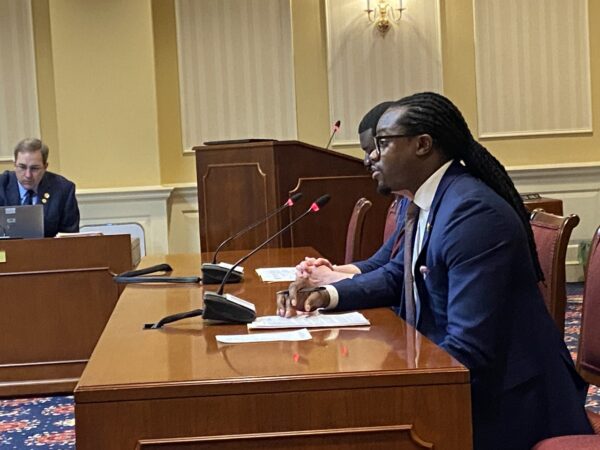
Sen. Alonzo Washington testifies before the Senate Finance Committee on March 16 on legislation to boost a statewide program with a focus for at-risk youth and violence prevention. Photo by William J. Ford.
He testified Thursday on Senate Bill 810 before the Senate Finance Committee on a bill that would allocate $8.5 million in state funding for an education and recreational enrichment program called “Maryland Priority Out-of-School Time.”
It would target those ages 4 to 19 for programs to take place before and after school, on weekends, and during holiday periods and summer breaks.
The state currently runs a program called the Public School Opportunities Enhancement Program budgeted at $3 million and managed by the state Department of Education. Local school districts, schools that receive “concentration of poverty” grants and nonprofit organizations apply to the state for grants toward various programs.
Besides $5.5 million more and a name change, the legislation would move the program to the children and youth division within the Governor’s Office of Crime, Prevention, Youth and Victim Services. One reason for the transfer is to incorporate a focus toward “at-risk youth and violence prevention.”
Washington said the current program serves about 2,000 students, but the additional funding could benefit about 6,000 students.
Ellie Mitchell, director of the MOST (Maryland out of School Time) Network based in Baltimore, testified in support of the legislation. She said moving to the children and youth division of governor’s office would help those community organizations focused on youth to access additional grants.
“That’s still just a little tiny chunk of the gap that we currently have in terms of numbers of students being served,” she said. “We do have to prioritize our highest poverty kids with that funding.”
It’s unclear if Washington’s legislation and the school food bill will see approval before the legislature’s “Crossover Day” on Monday. Bills passed through one chamber after that deadline face additional hurdles to ultimate passage.
Youth surveyed
The state Department of Health’s survey inquired about several topics such as a student’s sexual orientation, drug use and physical activity. Here are some more of the results:
- Nearly 27% of middle school students “were electronically bullied” through various forms of social media; compared to 18% in 2018. The figure remained nearly 14% for high school students in both years.
- Almost 20% of middle school students “made a plan about how they would kill themselves;” compared to 14% in 2018. High school students who “made a plan about how they would attempt suicide” stood at 15%, versus 16% about five years ago.
In terms of tobacco use, at least a dozen questions for high school students showed a decrease in 2021 from 2018 of those who smoked cigarettes, cigars, electronic vapors, or used smokeless tobacco.
Other figures decreased for middle school students such as percentage of those who live with someone who smokes cigars or cigarettes, and those who used marijuana or drank alcohol during the 30 days before the survey.
Meanwhile, high school students were also asked about their sexual identity and whether they “sometimes, rarely, or never feel” they can talk to an adult in or outside their family about their feelings.
The percentage of heterosexual students who said they don’t have someone to talk to was 59%. But that rose to 75% for students who identified as gay, lesbian or bisexual. The figure stood at 74% for students who described their sexual identity as “other” or “questioning.”
About 54% of gay, lesbian or bisexual students responded that they’ve lived with someone who was depressed, mentally ill, or suicidal. The figure decreases by almost half to 27.5% of heterosexual students. It was 48% for students who identified as other or questioning.
“While we see some encouraging results, there is clear data indicating a need for continued comprehensive approaches to support mental health and limit tobacco, alcohol, and drug use,” Health Department secretary Laura Herrera Scott said in a statement. “Now that students have returned to schools after navigating arduous challenges heightened by the pandemic, we can address findings through youth-centered health programming, education and outreach.”
For more information to help cope with stress, substance abuse and other support, click here to the health department’s resource guide.

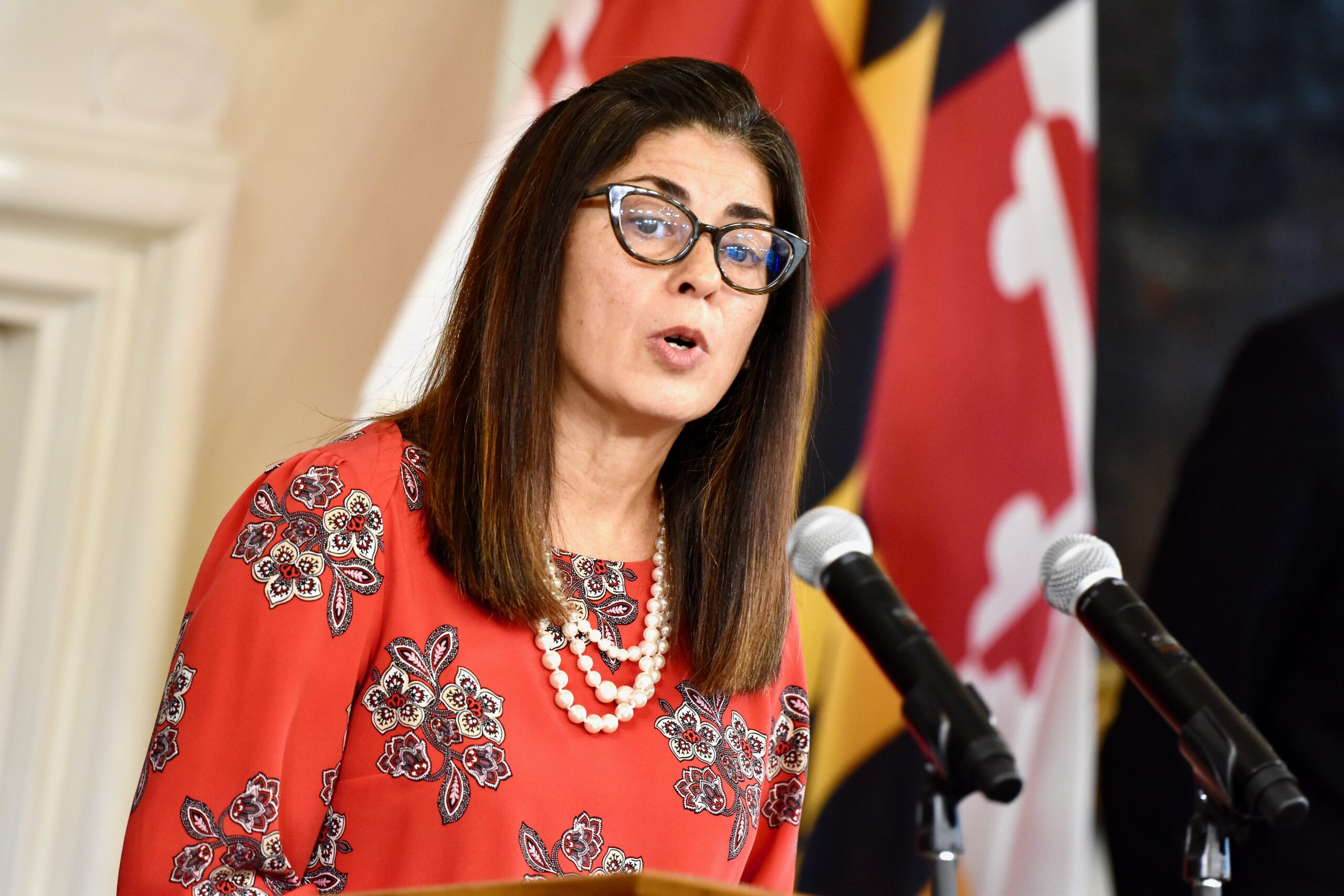
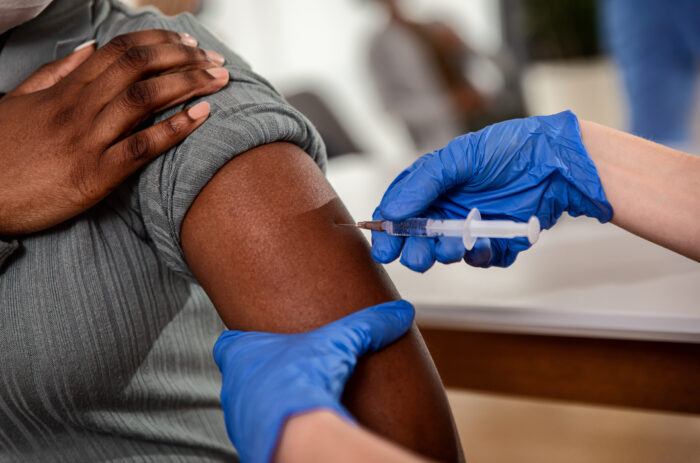
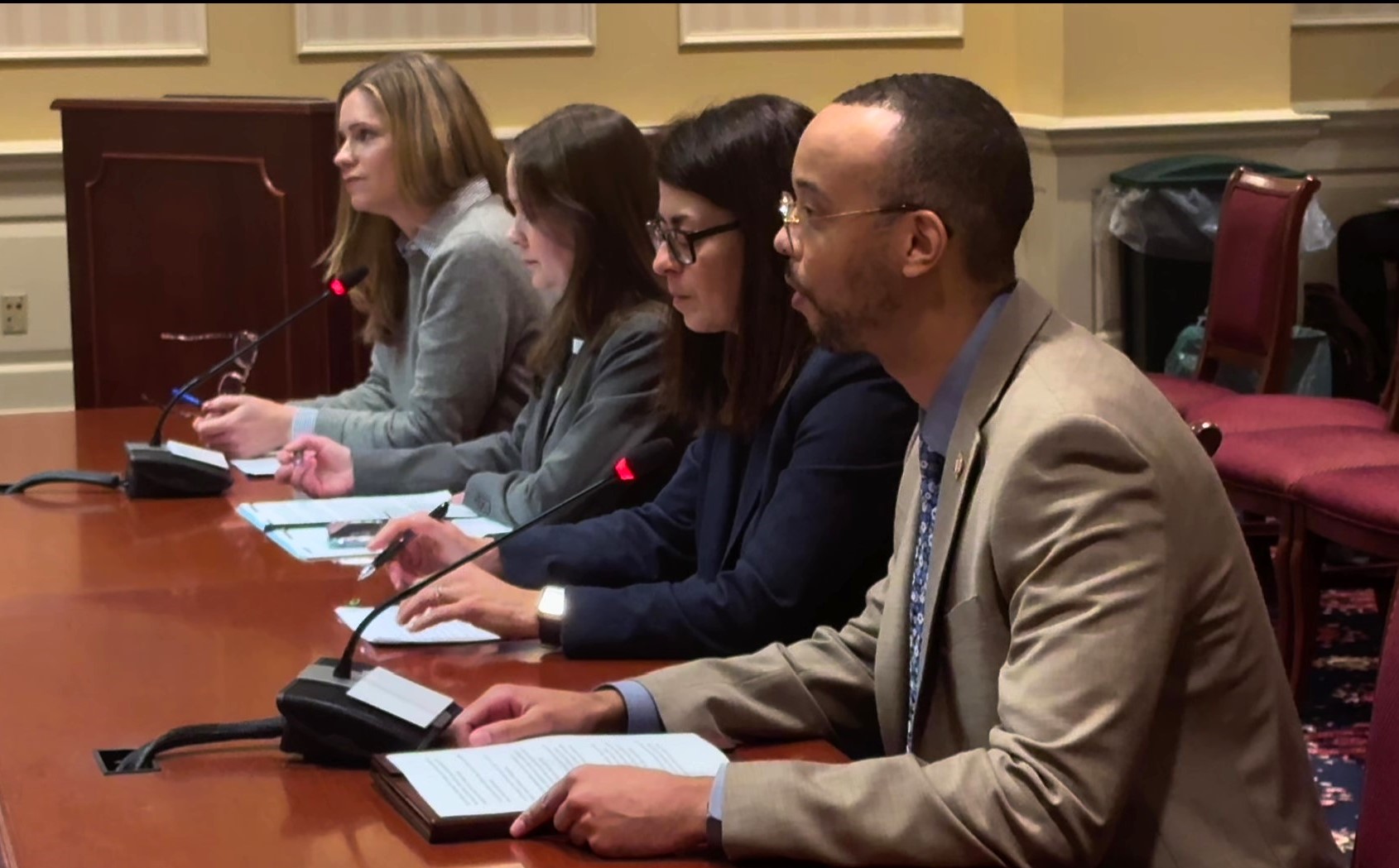
 Creative Commons Attribution
Creative Commons Attribution